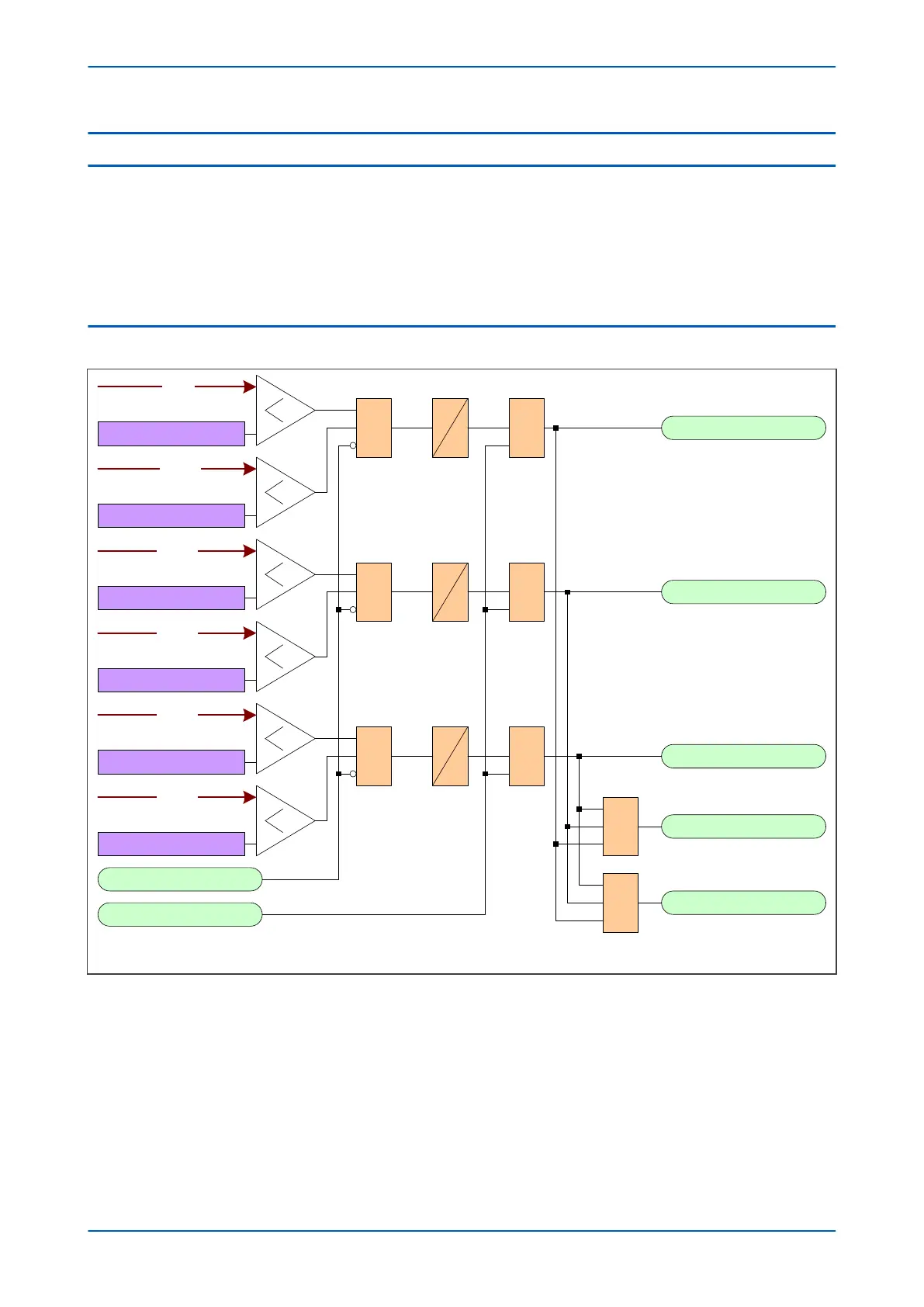8 POLE DEAD FUNCTION
The Pole Dead Logic is used to determine and indicate that one or more phases of the line are not energised. A
Pole Dead condition is determined either by measuring:
● the line curr
ents and/or voltages, or
● by monitoring the status of the circuit breaker auxiliary contacts, as shown by dedicated DDB signals.
It can also be used to block operation of underfrequency and undervoltage elements where applicable.
8.1 POLE DEAD LOGIC
V01201
& 1
Pole Dead A
Pole Dead B
Pole Dead C
Any Pole Dead
All Poles Dead
&
&
VTS Slow Block
CB Open 3 ph
1
1
1
&
Hardcoded threshold
Hardcoded threshold
Hardcoded threshold
Hardcoded threshold
Hardcoded threshold
Hardcoded threshold
IA
VA
IB
VB
IC
VC
Figure 167: Pole Dead logic
If both the line current and v
oltage fall below certain thresholds, the device will initiate a Pole Dead condition. The
undervoltage (V<) and undercurrent (I<) thresholds are hardcoded internally.
If one or more poles are dead, the device will indicate which phase is dead and will also assert the Any Pole Dead
DDB signal. If all phases are dead the Any Pole Dead signal would be accompanied by the All Poles Dead signal.
If a VT fails, a VTS Slow Block signal is generated to block the Pole Dead indications that would be generated by
the undervoltage and undercurrent thresholds. However, the VTS logic will not block the Pole Dead indications if
they are initiated by a CB Open 3 ph signal. A CB Open 3 ph signal automatically initiates a Pole Dead condition
regardless of the current and voltage measurement.
P14x Chapter 14 - Monitoring and Control
P14xEd1-TM-EN-1 329

